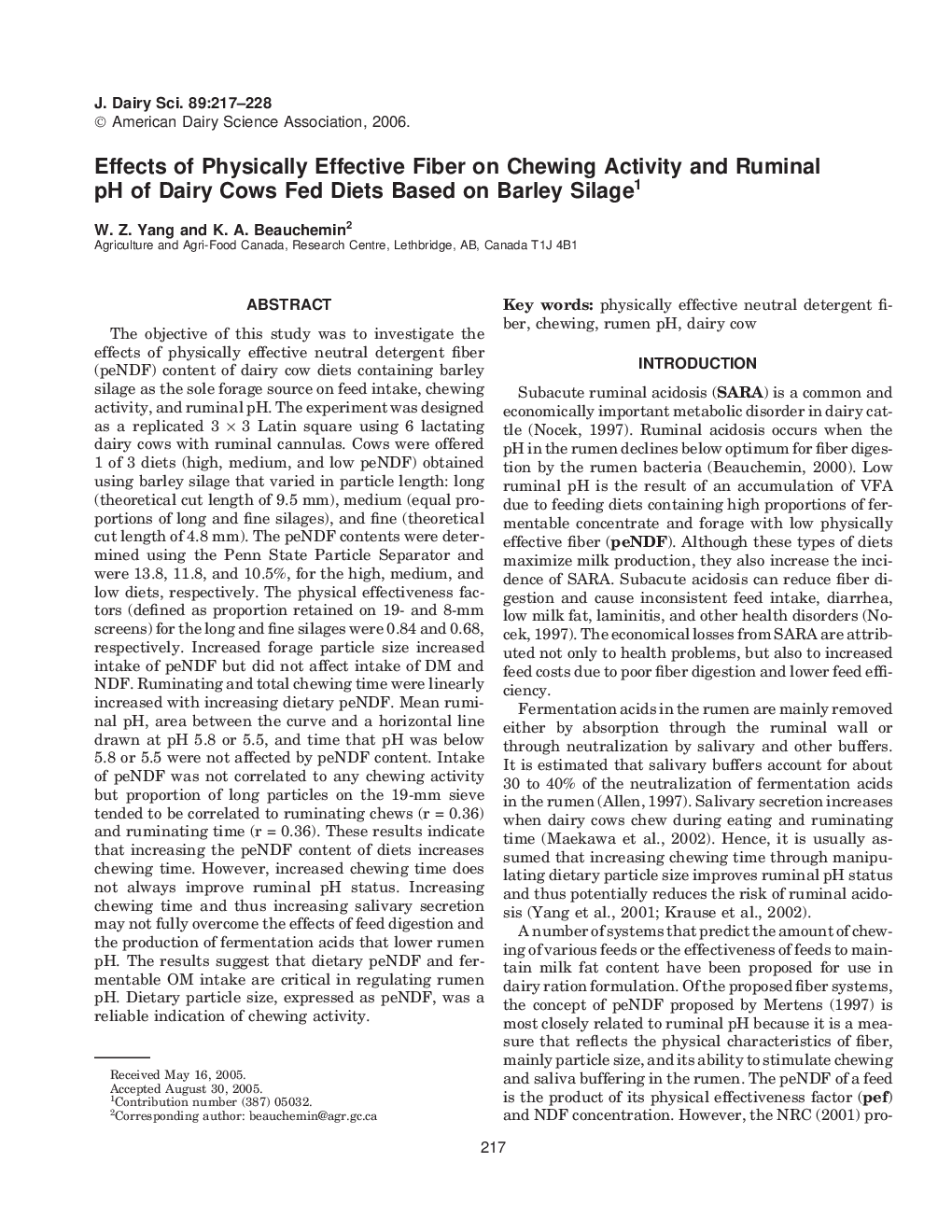| کد مقاله | کد نشریه | سال انتشار | مقاله انگلیسی | نسخه تمام متن |
|---|---|---|---|---|
| 2441259 | 1108135 | 2006 | 12 صفحه PDF | دانلود رایگان |
عنوان انگلیسی مقاله ISI
Effects of Physically Effective Fiber on Chewing Activity and Ruminal pH of Dairy Cows Fed Diets Based on Barley Silage1
دانلود مقاله + سفارش ترجمه
دانلود مقاله ISI انگلیسی
رایگان برای ایرانیان
کلمات کلیدی
موضوعات مرتبط
علوم زیستی و بیوفناوری
علوم کشاورزی و بیولوژیک
علوم دامی و جانورشناسی
پیش نمایش صفحه اول مقاله

چکیده انگلیسی
The objective of this study was to investigate the effects of physically effective neutral detergent fiber (peNDF) content of dairy cow diets containing barley silage as the sole forage source on feed intake, chewing activity, and ruminal pH. The experiment was designed as a replicated 3Â ÃÂ 3 Latin square using 6 lactating dairy cows with ruminal cannulas. Cows were offered 1 of 3 diets (high, medium, and low peNDF) obtained using barley silage that varied in particle length: long (theoretical cut length of 9.5Â mm), medium (equal proportions of long and fine silages), and fine (theoretical cut length of 4.8Â mm). The peNDF contents were determined using the Penn State Particle Separator and were 13.8, 11.8, and 10.5%, for the high, medium, and low diets, respectively. The physical effectiveness factors (defined as proportion retained on 19- and 8-mm screens) for the long and fine silages were 0.84 and 0.68, respectively. Increased forage particle size increased intake of peNDF but did not affect intake of DM and NDF. Ruminating and total chewing time were linearly increased with increasing dietary peNDF. Mean ruminal pH, area between the curve and a horizontal line drawn at pH 5.8 or 5.5, and time that pH was below 5.8 or 5.5 were not affected by peNDF content. Intake of peNDF was not correlated to any chewing activity but proportion of long particles on the 19-mm sieve tended to be correlated to ruminating chews (r = 0.36) and ruminating time (r = 0.36). These results indicate that increasing the peNDF content of diets increases chewing time. However, increased chewing time does not always improve ruminal pH status. Increasing chewing time and thus increasing salivary secretion may not fully overcome the effects of feed digestion and the production of fermentation acids that lower rumen pH. The results suggest that dietary peNDF and fermentable OM intake are critical in regulating rumen pH. Dietary particle size, expressed as peNDF, was a reliable indication of chewing activity.
ناشر
Database: Elsevier - ScienceDirect (ساینس دایرکت)
Journal: Journal of Dairy Science - Volume 89, Issue 1, January 2006, Pages 217-228
Journal: Journal of Dairy Science - Volume 89, Issue 1, January 2006, Pages 217-228
نویسندگان
W.Z. Yang, K.A. Beauchemin,